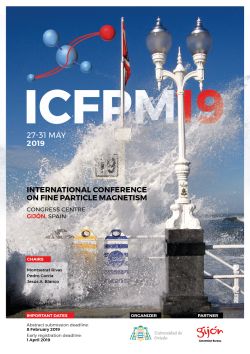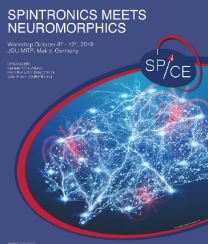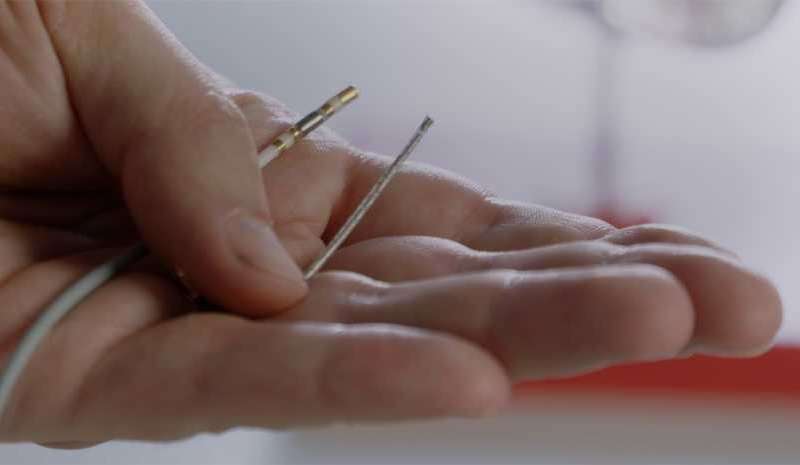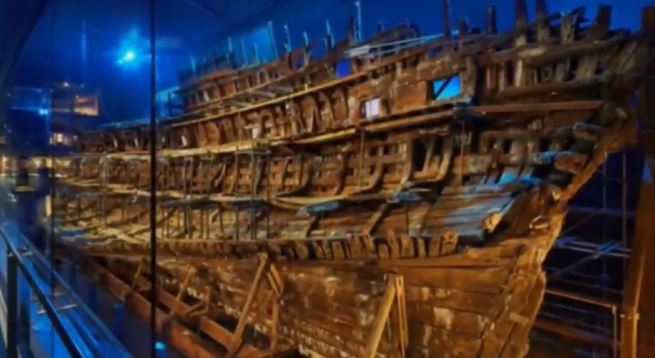
International Conference on Fine Particle Magnetism (ICFPM) to Take Place in Gijon (Spain)
January 31, 2019 Since 1991 the International Conference on Fine Particle Magnetism (ICFPM) is a series of conferences aimed at providing an international forum for discussion of the physics of magnetic nano- and micro-particles, their fundamental properties and underlying phenomena, developments in methods for their preparation and characterization, and their applications.
Since 1991 the International Conference on Fine Particle Magnetism (ICFPM) is a series of conferences aimed at providing an international forum for discussion of the physics of magnetic nano- and micro-particles, their fundamental properties and underlying phenomena, developments in methods for their preparation and characterization, and their applications.
ICFPM 2019 will be held in Gijon (Spain) on 27-31 May 2019. We will mark this 10th edition with special invited talks and celebratory events.
Join us at https://icfpm2019.org/
15th International Conference on Magnetic Fluids - ICMF 2019
December 13, 2018 Since 1979 an International Conference on Magnetic Fluids is held every three years. This conference brings together the international scientific community involved in magnetic fluid science, at large, from liquid dispersions to more complex fluids such as magnetorheological fluids, ferrogels, ferronematics, ferropolymers, biocolloidal systems…. The last two conferences were held in New Delhi (India) January 7-11, 2013 and in Ekaterinburg (Russia) July 4-8, 2016.
Since 1979 an International Conference on Magnetic Fluids is held every three years. This conference brings together the international scientific community involved in magnetic fluid science, at large, from liquid dispersions to more complex fluids such as magnetorheological fluids, ferrogels, ferronematics, ferropolymers, biocolloidal systems…. The last two conferences were held in New Delhi (India) January 7-11, 2013 and in Ekaterinburg (Russia) July 4-8, 2016.
Next ICMF 15th will take place at Sorbonne University in Paris (France) July 8-12, 2019. The conference will highlight synthesis and properties of innovative magnetic materials with a special emphasis on societal applications in the domain of energy, environment and biomedical. Check this link for more details.
Spintronics meets Neuromorphics - from the Spin Phenomena Interdisciplinary Center
November 18, 2018
They also announce their all upcoming workshops that you may want to attend, planned activities, and to propose your own workshop. Further ways of keeping up-to-date are the SPICE YouTube channel or Facebook.
Smallest Magnetic Steerable Catheter in the World
November 04, 2018 In cooperation with their EPFL colleagues, ETH Zurich researchers working under Brad Nelson, Professor of Robotics and Intelligent Systems, have now developed a catheter with a magnetic head. Rather than being steered manually, it is operated from a computer via an external magnetic field. This enables the front part of the catheter to be bent in any direction with the highest level of precision. "As a result, the new catheter can be steered through more complex blood vessels better than a conventional catheter," says Christophe Chautems, a doctoral student in Nelson's group. Since the magnetic catheter does not require a pull wire, it can be made much thinner. The scientists have thus developed the smallest ever steerable catheter.
In cooperation with their EPFL colleagues, ETH Zurich researchers working under Brad Nelson, Professor of Robotics and Intelligent Systems, have now developed a catheter with a magnetic head. Rather than being steered manually, it is operated from a computer via an external magnetic field. This enables the front part of the catheter to be bent in any direction with the highest level of precision. "As a result, the new catheter can be steered through more complex blood vessels better than a conventional catheter," says Christophe Chautems, a doctoral student in Nelson's group. Since the magnetic catheter does not require a pull wire, it can be made much thinner. The scientists have thus developed the smallest ever steerable catheter.
Check out the videos for more information or their recently published article.
Research in Ultralow Magnetic Fields
October 22, 2018
For further details, please see this link: https://www.ptb.de/tnts2019/home/
Tiny magnets will escort ions out of rare material from a shipwreck
August 24, 2018
Some of the marine bacteria that move in when a ship sinks munch on sulfur and release a compound called hydrogen sulfide. And when iron fittings, cannons, and other artifacts corrode, they release ions that react with the hydrogen sulfide to produce iron sulfides. That doesn’t matter much in an environment without much oxygen—and there's not much in several meters of silt at the bottom of the Solent, for instance. But when exposed to air again, the iron sulfides react with oxygen to produce sulfate salts and sulfuric acid, which eat away at the already fragile timbers and artifacts where wood is in contact with iron.
And to now save the old wood, they used magnetic particles. Read on to find out how here.
Electrostatic vs. Electro-Steric Stabilization of Ferrofluids
August 10, 2018
The results of volume fraction dependent structure analyses over a large concentration range by small-angle X-ray and neutron scattering, correlated with magneto-rheological investigations for the electrostatically stabilized MFs, demonstrate formation of short chains of magnetic nanoparticles which are relatively stable against coagulation with increasing concentration, while for MFs with electro-steric stabilization, magnetic field and shear rate dependent loosely bound structures are observed. These particle structures in MF/OA samples manifest themselves already at low volume fraction values, which can be attributed mainly to magnetic interactions of larger size particles, besides non-magnetic interactions mediated by excess surfactant.
For more information, check it out here.
UCLA Bioengineers Use Magnetic Force to Manage Pain
August 08, 2018
"Much of mainstream modern medicine centers on using pharmaceuticals to make chemical or molecular changes inside the body to treat disease," said Dino Di Carlo, UCLA professor of bioengineering and the principal investigator of the study. "However, recent breakthroughs in the control of forces at small scales have opened up a new treatment idea -- using physical force to kick-start helpful changes inside cells. There's a long way to go, but this early work shows this path toward so-called 'mechanoceuticals' is a promising one."
The researchers used small magnetic particles inside a gel to control cell proteins that respond to mechanical stimulation, and which control the flow of certain ions. These proteins are on the cell's membrane and play a role in the sensations of touch and pain. The study was published in Advanced Materials. For more information, check it out here.
For more information, check out our Archives.
September 2017

Search this site with the power of
